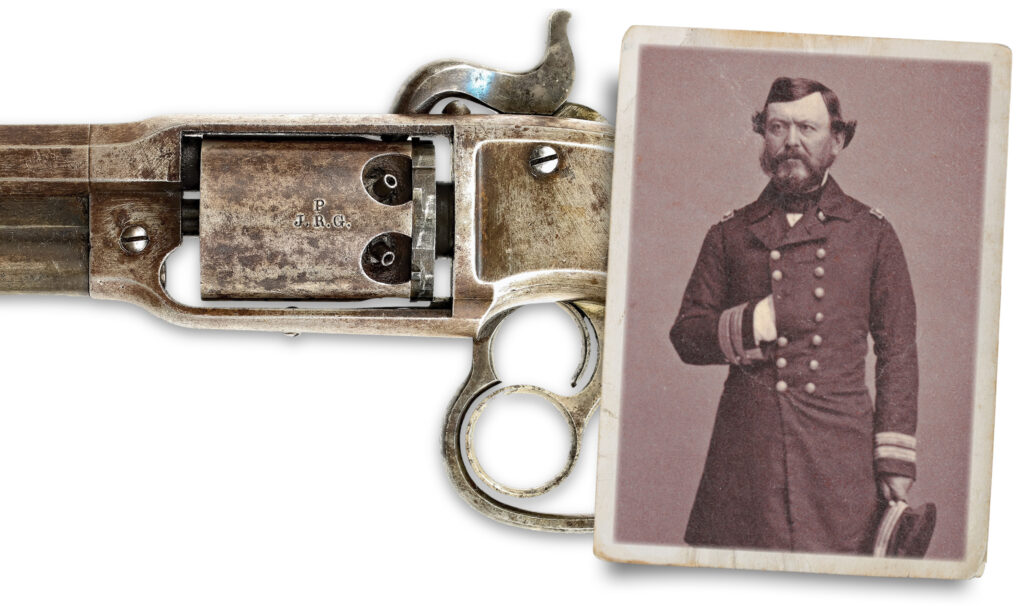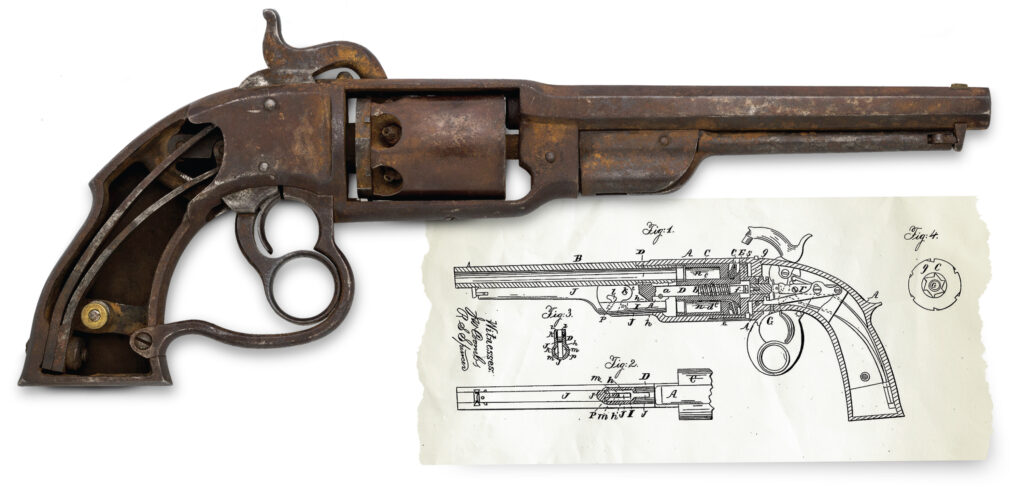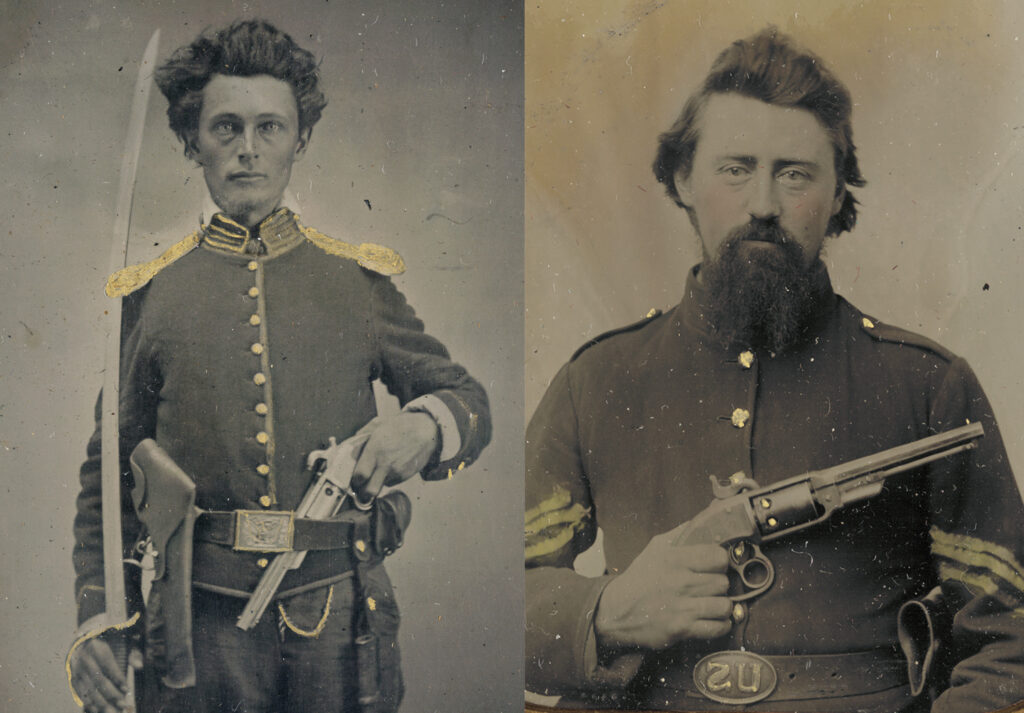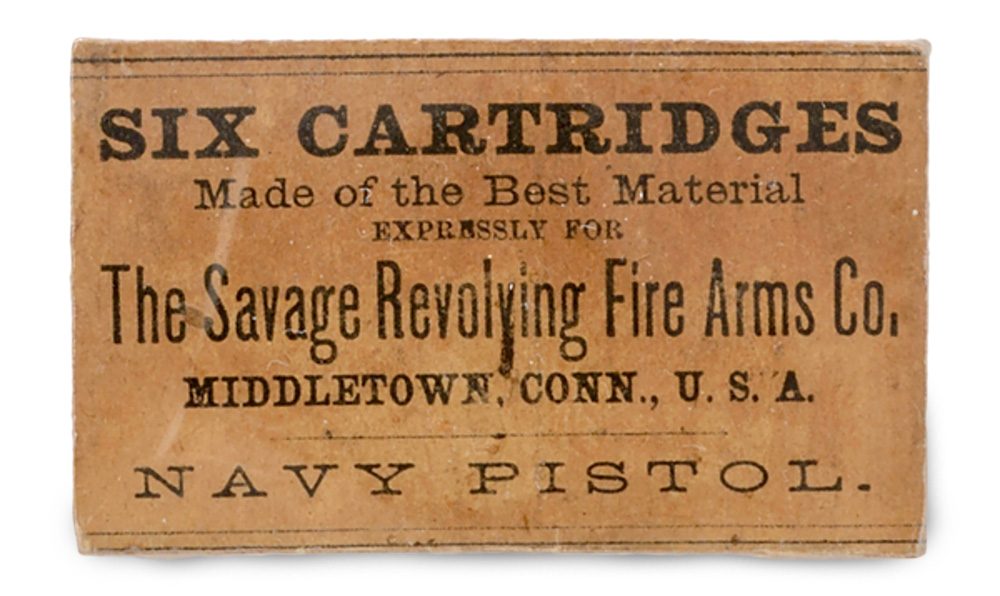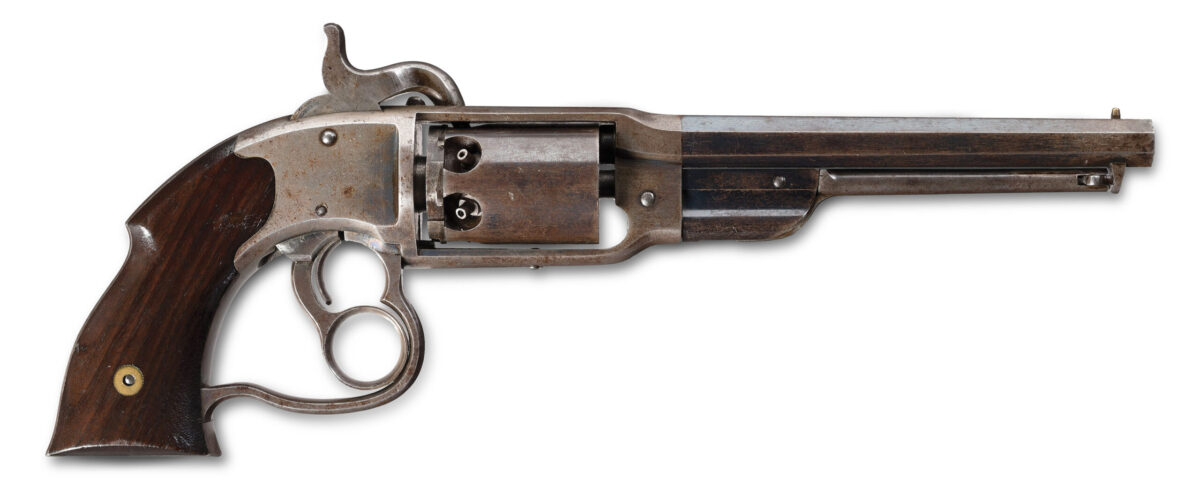The Civil War kicked off a demand for firearms just as industrial technology allowed gunsmiths to tinker with various designs, and numerous handguns were developed with the hopes of obtaining military contracts. Some of those weapons were sleek and well-balanced. And then there was the poorly balanced and odd-looking Navy revolver produced by the Savage Revolving Firearms Company of Middletown, Conn., which had a reputation for producing unusual and unique weapons.
The two triggers sported by the revolver were its most distinctive feature. The lower “ring” trigger was in reality more of a lever that rotated the cylinder and cocked the hammer at the same time. The upper trigger’s purpose was conventional in that it fired the weapon.
Though clumsy in appearance, the Savage Navy was a step toward double-action—meaning a revolver could be repeatedly fired simply by pulling its trigger. Revolvers at the time were single-action in that the user had to manually cock the hammer between each shot to rotate the cylinder.
The U.S. government first contracted with Savage on October 16, 1861, to buy some of the revolvers, and eventually purchased 12,000 of them. They were issued to 26 Union cavalry regiments, including units from Illinois, Kansas, Kentucky, Missouri, New York, Ohio, Pennsylvania, Wisconsin, Vermont, and the Potomac Home Brigade. Even some Confederate cavalry regiments from Texas and Virginia were issued Savage Navys privately bought and secretly shipped south.
Fifty Savage revolvers were even sent for use aboard the famous USS Constitution in 1861. That ship was used as a training vessel for at the Naval Academy in Annapolis, Md.
